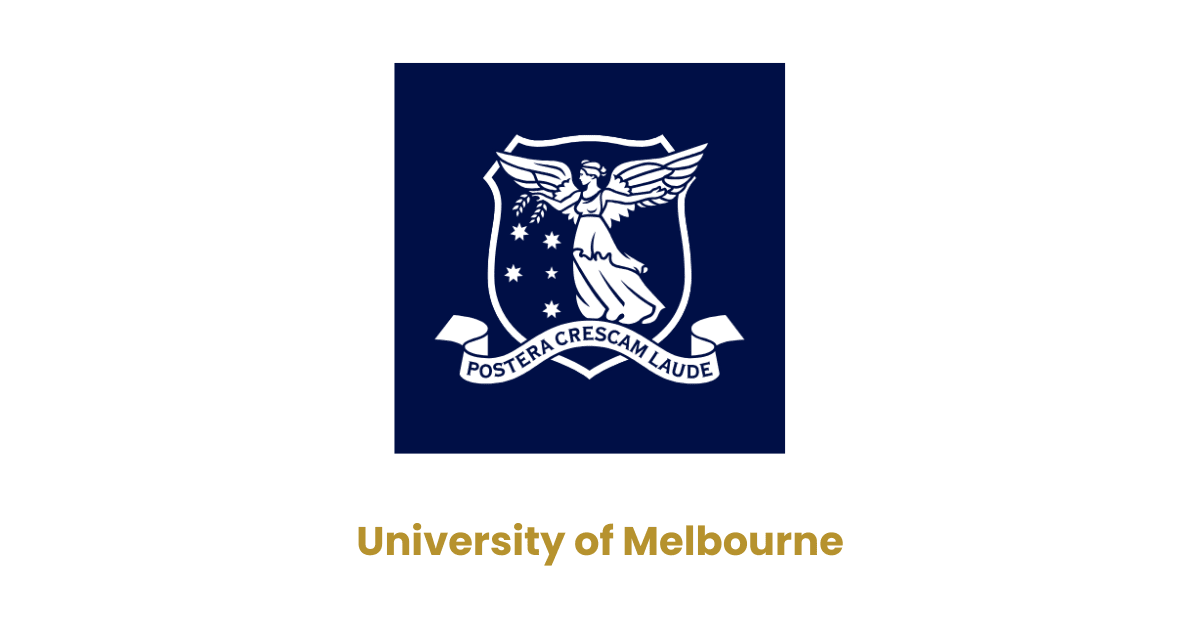The University of Melbourne Overview
The University of Melbourne, founded in 1853, stands as one of Australia’s oldest and most prestigious higher education institutions. Moreover, it consistently ranks among the top universities globally, known for its strong emphasis on research, academic excellence, and innovation. Additionally, the university offers a distinctive educational approach through the Melbourne Model, allowing students to pursue a broad undergraduate degree followed by specialized graduate study.
Furthermore, with its vibrant campus life, world-class facilities, and a diverse student body representing over 150 countries, it fosters a truly international learning environment. As a result, the University of Melbourne not only prepares graduates for global careers but also equips them with the skills needed to lead and innovate in various fields.
2. General Information
| Name | University of Melbourne |
| Established | 1853 |
| Type | Public Research University |
| Motto | “Postera Crescam Laude” (Latin) – “We shall grow in the esteem of future generations” |
| Location | Melbourne, Victoria, Australia |
| Main Campus | Parkville (with additional campuses across Victoria) |
| Student Population | Over 50,000 students, including 20,000+ international students |
| Chancellor | Jane Hansen |
| Vice-Chancellor | Professor Duncan Maskell |
3. Fee Structure
| Bachelor of Arts | $37,884 – $52,032 | $100,868 – $168,170 |
| Bachelor of Science | $49,188 – $57,928 | $155,532 – $214,400 |
| Bachelor of Commerce | $49,220 – $55,328 | $154,356 – $177,210 |
| Bachelor of Biomedicine | $50,596 – $57,584 | $179,555 – $204,465 |
| Bachelor of Engineering | $44,736 | N/A |
| Bachelor of Design | $41,668 – $55,676 | $137,332 – $180,712 |
| Bachelor of Fine Arts (various majors) | ~$37,312 – $39,404 | ~$119,000 – $120,500 |
| Bachelor of Music | $37,312 – $38,456 | $118,917 – $125,832 |
| Bachelor of Oral Health | $75,696 | $252,584 |
4. The University of Melbourne Global Rankings
- QS World University Rankings 2024: Ranked #14 globally
- Times Higher Education (THE) World Rankings: Top 35
- #1 in Australia for graduate employability and research impact
5. The University of Melbourne Faculties and Academic program
To begin with, the University of Melbourne is structured around a range of faculties that cater to a wide array of academic interests. Notably, the university includes faculties such as Arts, Business and Economics, Engineering and Information Technology, Fine Arts and Music, Law, Medicine, Dentistry and Health Sciences, Science, and Education.
Furthermore, each faculty offers specialized undergraduate and postgraduate programs designed to equip students with critical thinking, research capabilities, and practical skills. For instance, the Faculty of Science provides pathways in fields like biology, physics, and data science, while the Faculty of Business and Economics focuses on finance, marketing, and management.
Additionally, the Melbourne Model encourages breadth in learning, allowing students to combine core studies with subjects from other disciplines. Consequently, students not only gain depth in their major but also develop a well-rounded academic profile. Overall, the university’s commitment to innovation and interdisciplinary learning continues to attract scholars from across the globe.
- Faculty of Arts – Humanities, social sciences, languages, and history.
- Melbourne Business School – Business, commerce, and economics.
- Faculty of Education – Teacher education and education research.
- Faculty of Engineering and Information Technology – Civil, mechanical, software engineering, and IT.
6. The University of Melbourne Research & Innovation
To begin with, the University of Melbourne is structured around a range of faculties that cater to a wide array of academic interests. Notably, the university includes faculties such as Arts, Business and Economics, Engineering and Information Technology, Fine Arts and Music, Law, Medicine, Dentistry and Health Sciences, Science, and Education.
Furthermore, each faculty offers specialized undergraduate and postgraduate programs designed to equip students with critical thinking, research capabilities, and practical skills. For instance, the Faculty of Science provides pathways in fields like biology, physics, and data science, while the Faculty of Business and Economics focuses on finance, marketing, and management. Additionally,
- Member of the Group of Eight (Go8), Australia’s top research-intensive universities
- Hosts over 100 research centers and institutes
- Collaborates internationally with leading institutions, including Oxford, Harvard, and the University of Tokyo
7. Contact Information – University of Melbourne
- Address Grattan Street, Parkville, Victoria 3010, Australia
- General Enquiries +61 3 9035 5511
- International Enquiries +61 3 9035 4000
- Email (General) 13melb@unimelb.edu.au
- International Office Email international-admissions@unimelb.edu.au
- Website www.unimelb.edu.au
To begin with, the University of Melbourne is located at Grattan Street in Parkville, Victoria 3010, Australia, serving as the central hub for academic and administrative activities. Moreover, for general enquiries, individuals may reach the university at +61 3 9035 5511. In addition, international students seeking assistance can contact the international office directly at +61 3 9035 4000. Furthermore, inquiries via email can be directed to 13melb@unimelb.edu.au for general questions, while international-
Read more Ain Shams university

